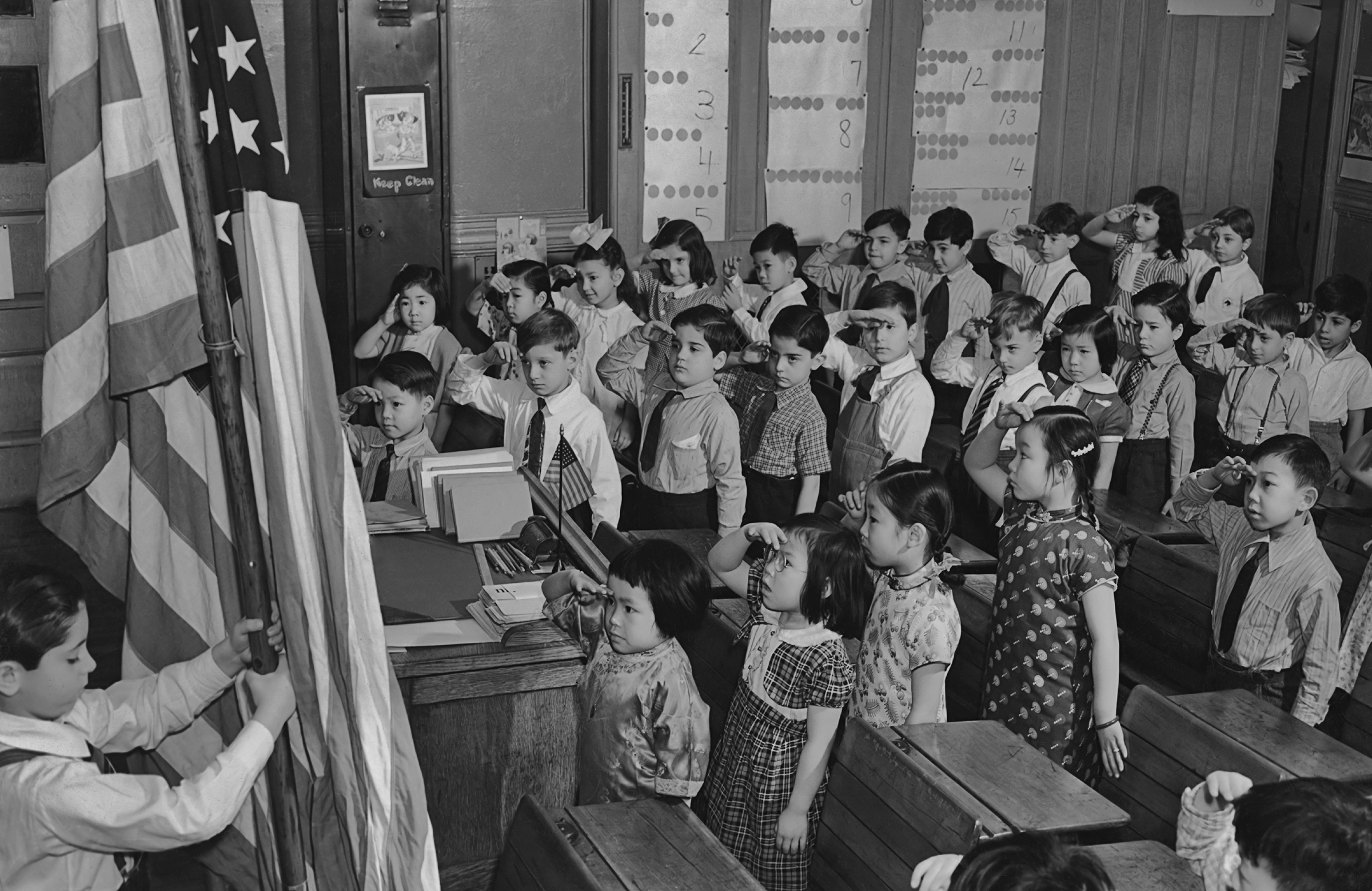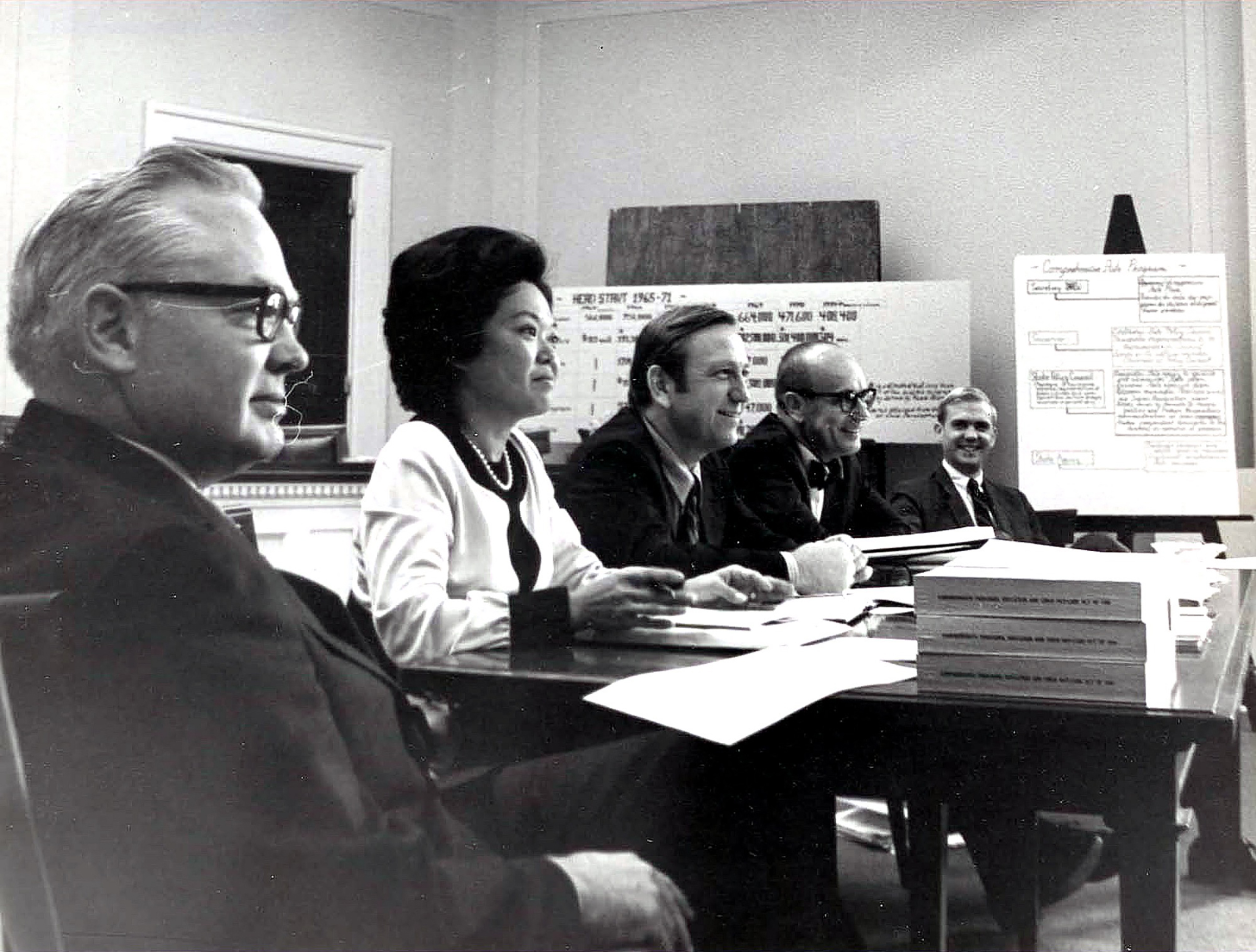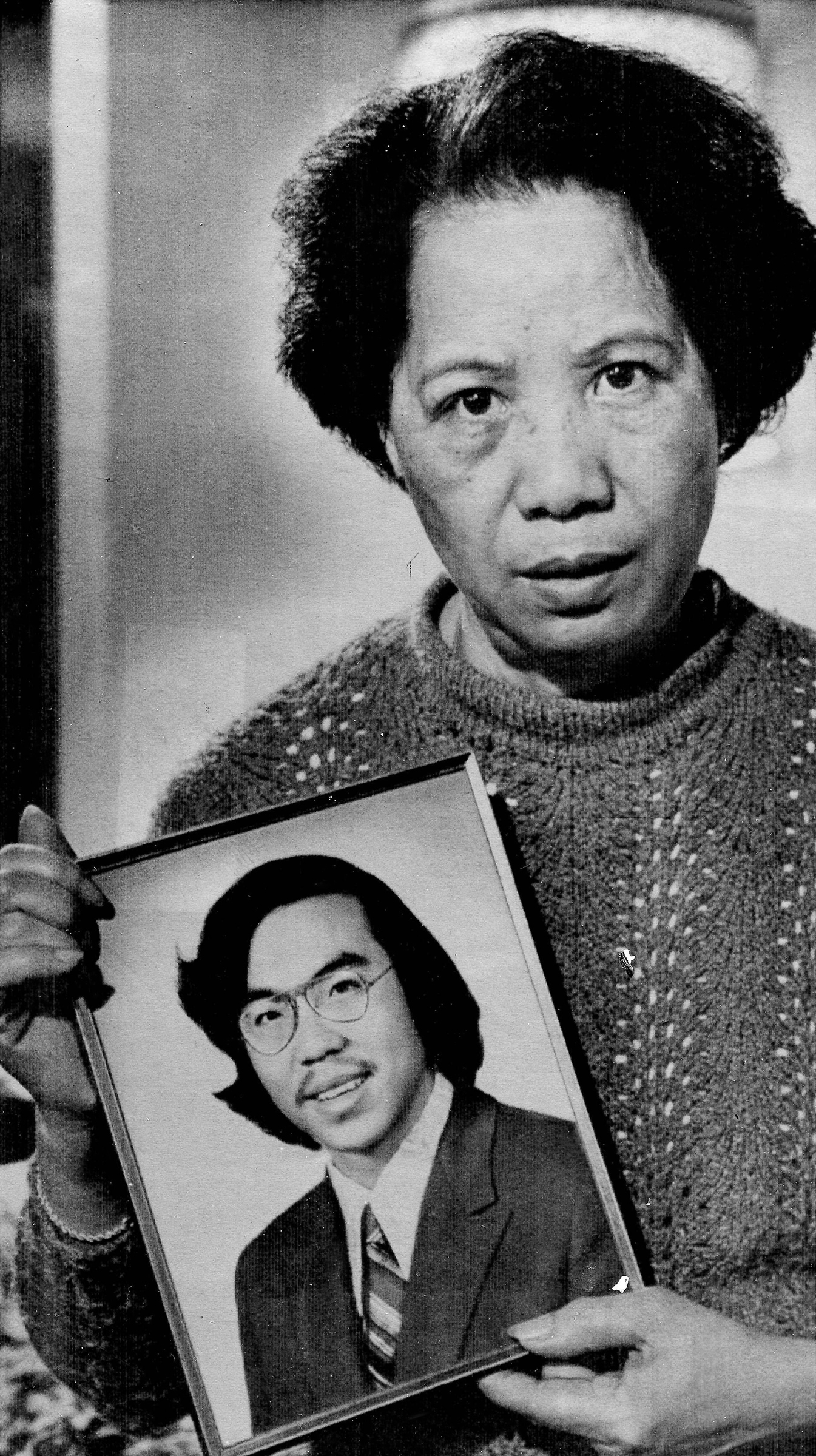
On the morning of March 17, Liz Kleinrock contemplated calling out of work. The shootings at three Atlanta-area spas had happened the night before, leaving eight dead including six women of Asian descent, and Kleinrock, a 33-year-old teacher in Washington, D.C., who is Asian-American, felt the news weighing on her heavily.
But instead of missing work, she changed up her lesson plan. She introduced her sixth graders over Zoom to poems written by people of Japanese ancestry incarcerated during World War II. Her lesson included “My Plea,” printed in 1945 by a young person named Mary Matsuzawa who was held at the Gila River Relocation Center in Arizona: “I pray that someday every race / May stand on equal plane / And prejudice will find no dwelling place / In a peace that all may gain.”
“I feel like so many Asian elders have been targeted because of this stereotype that Asians are meek and quiet and don’t speak up and don’t say anything, and therefore that makes our elderly easy targets,” Kleinrock said to TIME by phone, speaking of the purpose of the lesson. “And so it’s so important to be loud and to bring attention to this. Education is so important. If we don’t know our history, then we’re doomed to repeat the same thing over and over again.”
Kleinrock was not the only educator rushing to fill that gap. On March 19, Katie Li, 37, the Boston Public Schools Ethnic Studies coordinator, described a “panic” among higher-ups trying to put out statements and provide resources in the wake of the shootings, but not knowing how to make sense of what happened in the Atlanta area themselves.
“Many people who are in power trying to address this right now have no idea how to interpret it,” Li tells TIME. “Many people are saying, ‘It’s just happening now. This past year has been such a hard time for Asians.’ If people actually understood the history of Asian America, they wouldn’t be so short-sighted in their statements addressing this moment…[The shooting] amplifies hundreds of years of history of exclusion, of erasure, of invisibility.”
The spa shootings in the Atlanta area represent, to many, the grim culmination of a year in which anti-Asian violence has increased across the United States. But this year is also part of a history that began long before 2020. And in fact, educators and historians tell TIME, anti-Asian racism is directly linked to history, and how members of the Asian American and Pacific Islander (AAPI) community are often depicted in U.S. history lessons: as foreigners or national security threats, as opposed to people who have lived and worked in America and have challenged it to live up to its ideals of equality for all.

There are more than 22 million Asian Americans (about 6% of the U.S. population), representing nearly 50 ethnic groups and speaking more than 100 languages, and they make up the fastest growing racial or ethnic group among eligible U.S. voters. Yet little of their story is taught in K-12 U.S. schools. But, as the events of recent years—from the Black Lives Matter movement to former President Trump’s racist statements—inspire educators and activists to call for more teaching of the history of marginalized groups in America, that may be changing.
What Asian-American history is—and is not—taught
The U.S. has no national curriculum that requires the teaching of any kind of history, let alone Asian-American history. But individual states’ social studies standards, which influence what will be included in standardized tests and textbooks, only scratch the surface of Asian-American history. Though there’s no central database of how Asian-American history shows up in those standards, curricula tend to focus on a few milestones, including Chinese immigration in the mid-19th century, Chinese laborers’ role in building the transcontinental railroad, the Chinese Exclusion Act of 1882, and the incarceration of nearly 120,000 people of Japanese ancestry—including American citizens—during World War II.
But those moments hardly tell the whole story. And, educators say, they don’t give an accurate picture of the Asian-American experience.
A more complete version of the history might include a deeper look at anti-Asian discrimination, with lessons about the mob violence faced by immigrants from Asian countries. It would also include milestones in U.S. history achieved by people of Asian descent, from labor leader Larry Itliong’s role in organizing the landmark Delano Grape Strike to Patsy Mink becoming the first Asian-American woman elected to the U.S. House of Representatives. And it would go beyond the boundaries of the United States. With that in mind, on March 19, Moé Yonamine, 43, a high school social studies teacher in Portland, Ore.—who teaches five minutes from where 3,676 Japanese Americans were held before being transported to internment camps—reminded her students that Asian-American history can’t be understood fully without considering the consequences of foreign U.S. actions and how those actions shaped circumstances that led people to flee Asian countries. Yonamine said she will be spending her spring break putting together a lesson plan about Asian-American history-makers to know.
“It feels like, while I’m grieving, I’ve been put in action to teach things that we don’t have enough curriculum for,” says Yonamine.

Sohyun An, a professor of elementary and early childhood education at Georgia’s Kennesaw State University who has researched how Asian-American history is represented in state social studies standards nationwide, lives about 20 minutes away from the spas that were attacked. She worries that if students only learn about Asian American history as an immigration story, they may not realize how long the community has actually been here. And, she says, that ignorance can have serious consequences.
“Asians were part of the United States even well before many white European immigrants came through Ellis Island,” An tells TIME. “Kids grow up in Georgia and think Asians are all foreigners, and when they become ‘the enemy’ to the national crisis like COVID-19, ‘the military enemy’ and ‘economic competitor like China or Japan,’ it’s all coming from a missed opportunity in school [to teach] that Asians are a part of America…Curriculum is not a matter of academic debate. The danger is real.”
‘They don’t want to talk about race’
Georgia’s state social studies standards for what fifth-grade students are expected to know list Japanese aggression in Asia and the Pearl Harbor attacks, but not the incarceration of Japanese-Americans in the U.S. One of An’s students, Lisa Chu, 29, a fifth-grade teacher in suburban Atlanta, says she’s asked her students in the last year to consider why that is.
“They’re able to kind of see we don’t learn this because we either don’t think it’s important enough to learn, or it just kind of puts the U.S. in a bad light,” says Chu, “and so it’s better to talk about other countries and their wrongdoings than it is our own and to be reflective of our own past mistakes.”
Scholars agree that one of the reasons a full history of Asian Americans has not been incorporated into core U.S. History curricula in K-12 schools is because it doesn’t portray America in a positive light.
“K-12 American history texts reinforce the narrative that Asian immigrants and refugees are fortunate to have been ‘helped’ and ‘saved’ by the U.S.,” Jean Wu, who has taught Asian American Studies for more than 50 years and is a senior lecturer emerita at Tufts University, said in an email to TIME. “The story does not begin with U.S. imperialist wars that were waged to take Asian wealth and resources and the resulting violence, rupture and displacement in relation to Asian lives. Few realize that there is an Asian diaspora here in the U.S. because the U.S. went to Asia first.”
Occasionally, major world events can lead to more teaching of Ethnic Studies—but that hasn’t been the case with Asian-American history.

“Attention to teaching histories and realities of racialized marginalized groups has always been reactionary instead of proactive in U.S. K-12 education,” Wu says. “Historic moments such as the murder of Vincent Chin, the Japanese-American Redress Movement, the destruction of Koreatown, 9/11 and targeting of South Asian Americans did not engender interest in AAPI histories and curricular re-evaluation in K-12.”
The obstacles to improvement are many. For example, Noreen Naseem Rodríguez, an Assistant Professor of Elementary Social Studies at Iowa State University, says that many of the teaching candidates she supervises have not had exposure to a wide range of historical perspectives, and might hesitate when it comes to instructing them. In the 2017-2018 school year, about 80% of public school teachers were white, compared to 2% who were Asian.
“I see this real terror that they’re going to say or do something that will upset parents and end their careers, so they don’t want to talk about race,” Rodríguez says. “They want books that have diverse characters, but they don’t really want to talk about racial discrimination or stereotypes, unless it’s through a simplified context of bullying. So when teachers are trying to emphasize notions of being nice or kind rather than being anti-racist, not being unjust, that’s why we’re not ready as a society, or particularly as K-12 educators, to deeply engage with these topics because perhaps we ourselves haven’t done that learning.”
The way forward
There are signs, however, that people may be ready to learn. The increase in Asian Americans in Congress, in Hollywood, in newsrooms and among K-12 teachers have all been key to raising awareness of the lack of Asian American history, historian and author Erika Lee tells TIME, after testifying during the historic March 18 congressional hearing on anti-Asian discrimination. The real question now, she says, is whether that frustration over lack of resources will be channeled into meaningful systemic change in rethinking core U.S. History curricula.

Leading education non-profits and publishers such as Zinn Education Project, Learning for Justice and Rethinking Schools have long tried to address the issue by publishing articles and lesson plans on Asian-American history-makers and milestones and that adapt historians’ work for young readers. And the education organization Facing History tells TIME it is working on a new curriculum on Asian Pacific Islander and Asian American Pacific Islander history. There are also Asian-American organizations that offer resources, like the Smithsonian Asian Pacific American Center’s education website. One new resource for teachers that came out in 2020 are lesson plans for K-12 by Asian Americans Advancing Justice, pegged to the PBS Asian Americans documentary that aired in May 2020, and the organization is figuring out how to organize professional development workshops for teachers.
However, there is not one universal aggregator for U.S. teachers for all available resources on this subject. If educators want to teach this history, it’s usually up to them to hunt for the information, websites, and professional development workshops to attend.
“This is a problem with education, because no one wants to put any money towards it,” says Karen Korematsu, Fred Korematsu’s daughter and Executive Director of the Fred T. Korematsu Institute to promote education on Japanese-American incarceration.
In terms of policy efforts, a Connecticut House bill aims to include Asian American history in a model curriculum for public schools, and an Illinois House bill aims to require an Asian American history unit in elementary schools and high schools. On March 18, the California State Board of Education approved a roughly 900-page Ethnic Studies Model Curriculum that includes about a dozen AAPI lessons. The curriculum isn’t mandatory, but a reference for school districts; Karen Korematsu was involved in the effort for it to include more AAPI topics.
“Right now we’re seeing so much interest and response to learning about Asian-American history, Asian-American women, and the history of anti-Asian racism,” says Lee. “There is the potential for this moment right now to be an opportunity where there is a greater reckoning of the ways in which this lack of historical lessons are a disservice to our country and our communities. There is a moment here, an opportunity, where we may see not just an interest this week and next week, but a newfound commitment and resources and institutions that will sustain it for the many years to come.”
More Must-Reads from TIME
- Breaking Down the 2024 Election Calendar
- How Nayib Bukele’s ‘Iron Fist’ Has Transformed El Salvador
- What if Ultra-Processed Foods Aren’t as Bad as You Think?
- How Ukraine Beat Russia in the Battle of the Black Sea
- Long COVID Looks Different in Kids
- How Project 2025 Would Jeopardize Americans’ Health
- What a $129 Frying Pan Says About America’s Eating Habits
- The 32 Most Anticipated Books of Fall 2024
Write to Olivia B. Waxman at olivia.waxman@time.com